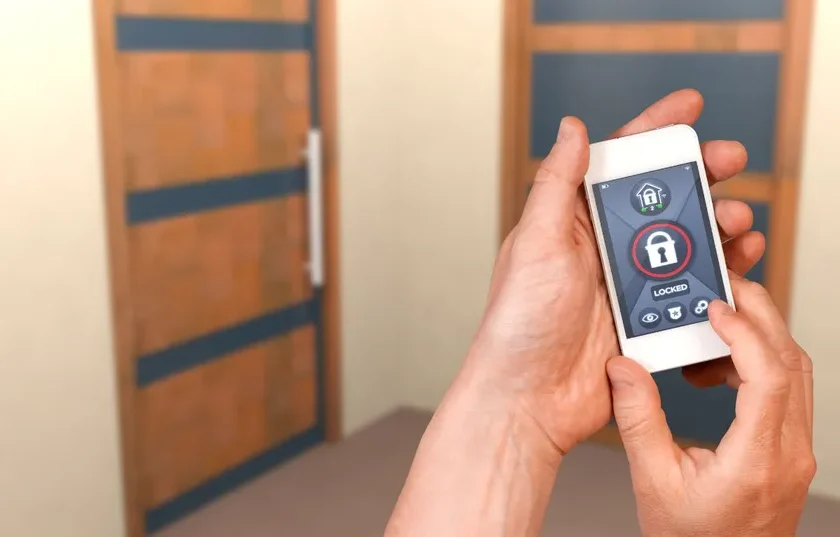Introduction

The three most popular types of door locks—handle locks, knob locks, and deadbolt locks—have been staples in home and business security for decades. However, with advancements in technology and changing security needs, significant modifications have been made to their use and structure. Here, we explore how these traditional locks have evolved to meet modern requirements, focusing on modern door lock modifications.
modern door lock modifications
Modern door lock modifications have revolutionized traditional handle, knob, and deadbolt locks, integrating advanced technology to enhance both security and convenience. These modifications include smart features such as keyless entry, remote access via smartphone apps, and integration with smart home systems, allowing users to control and monitor their locks from anywhere.
Handle Locks
Traditional Use and Structure: Handle locks, also known as lever handle locks, are commonly used for interior doors, such as those in offices, bedrooms, and bathrooms. They consist of a lever handle that, when turned, retracts the latch and allows the door to open.
Modifications:
- Smart Handle Locks:
- Integration with Smart Home Systems: Modern handle locks can now be integrated with smart home systems, allowing users to control and monitor the lock remotely via smartphone apps. This is a prime example of modern door lock modifications enhancing convenience.
- Keyless Entry: Many smart handle locks now feature keyless entry options, such as keypad codes, RFID cards, or biometric authentication (fingerprint recognition). These modern door lock modifications provide enhanced security and ease of use.
- Enhanced Security Features:
- Built-in Alarms: Some handle locks now come with built-in alarms that activate when unauthorized attempts to open the door are detected, showcasing the impact of modern door lock modifications on security.
- Reinforced Materials: Advances in materials science have led to the use of stronger, more durable materials, making handle locks more resistant to tampering and forced entry. These modern door lock modifications ensure long-term reliability and performance.
- Accessibility Improvements:
- Ergonomic Designs: Modern handle locks are designed with ergonomics in mind, making them easier to operate for people with disabilities or reduced hand strength. This is one of the practical modern door lock modifications.
- Voice Control: Integration with voice-activated assistants like Amazon Alexa and Google Assistant allows users to lock and unlock doors using voice commands, further illustrating modern door lock modifications in action.
Knob Locks
Traditional Use and Structure: Knob locks are commonly used for both interior and exterior doors. They consist of a round knob that, when turned, retracts the latch and allows the door to open. Typically, one side of the knob has a keyhole for locking and unlocking.
Modifications:
- Smart Knob Locks:
- Biometric Authentication: Modern knob locks now include biometric authentication methods, such as fingerprint recognition, to enhance security and convenience, a key aspect of modern door lock modifications.
- Wireless Connectivity: Integration with Wi-Fi or Bluetooth allows users to control and monitor their knob locks remotely using smartphone applications. These modern door lock modifications offer greater control and peace of mind.
- Security Enhancements:
- Anti-Bump and Anti-Pick Mechanisms: Modern knob locks are designed with advanced security features to prevent lock bumping and picking, common techniques used by intruders. These security-focused modern door lock modifications ensure better protection.
- Tamper Detection: Some smart knob locks include tamper detection features that alert homeowners to potential break-in attempts, another result of modern door lock modifications.
- User Convenience:
- Automated Locking: Some knob locks now feature automated locking mechanisms that engage after a set period, ensuring the door is always locked when not in use. These modern door lock modifications enhance user convenience.
- Customizable Access Codes: Users can generate and manage multiple access codes for family members, guests, or service personnel, providing flexible access control, thanks to modern door lock modifications.
Deadbolt Locks
Traditional Use and Structure: Deadbolt locks are commonly used for exterior doors due to their high level of security. They consist of a solid metal bolt that slides into the door frame to lock the door securely.
Modifications:
- Smart Deadbolt Locks:
- Remote Access and Monitoring: Smart deadbolt locks allow users to lock, unlock, and monitor their doors remotely via smartphone apps, providing greater control and peace of mind. This is a significant advantage of modern door lock modifications.
- Voice and App Control: Integration with voice-activated assistants and smartphone apps allows for convenient locking and unlocking without the need for a physical key. These modern door lock modifications offer seamless user experiences.
- Enhanced Security:
- Two-Factor Authentication: Some smart deadbolt locks now require two-factor authentication, combining a PIN code or biometric scan with a traditional key for added security. These modern door lock modifications ensure maximum security.
- Auto-Locking Features: Modern deadbolt locks often include auto-locking mechanisms that engage after a specified time, ensuring the door is always secure. These modern door lock modifications provide additional peace of mind.
- Advanced Materials and Design:
- Reinforced Construction: Advances in materials technology have led to the development of deadbolts made from stronger, more tamper-resistant materials. These modern door lock modifications enhance the durability and security of deadbolt locks.
- Weather Resistance: New designs often include weatherproofing features, ensuring that the lock operates smoothly in various environmental conditions. These modern door lock modifications ensure reliability in any weather.
Conclusion
The modifications made to handle, knob, and deadbolt locks reflect a broader trend towards integrating advanced technology and enhancing security. By incorporating smart features, biometric authentication, and improved materials, these traditional locks have evolved to meet the demands of modern users. As a result, they offer increased convenience, higher security, and greater control over access to homes and businesses. The ongoing innovation in lock technology ensures that these essential security devices will continue to evolve, providing even more robust and user-friendly solutions in the future, demonstrating the impact of modern door lock modifications.
